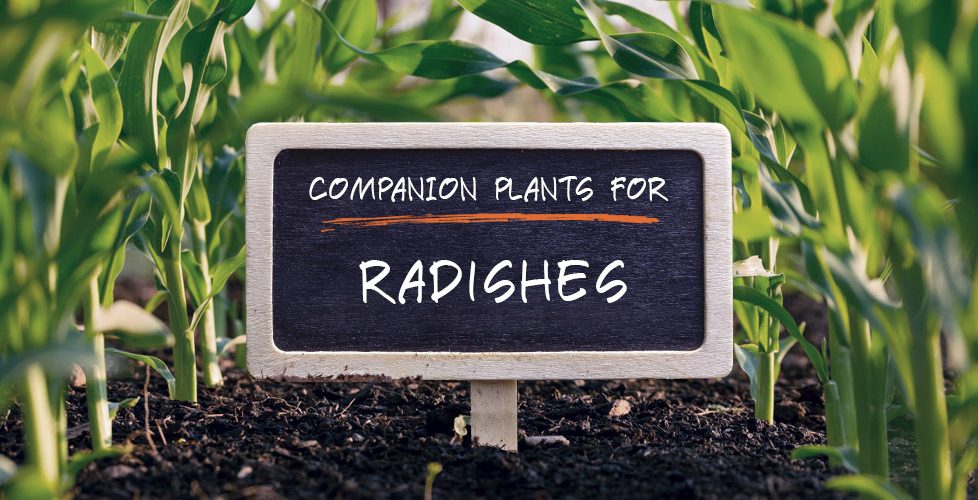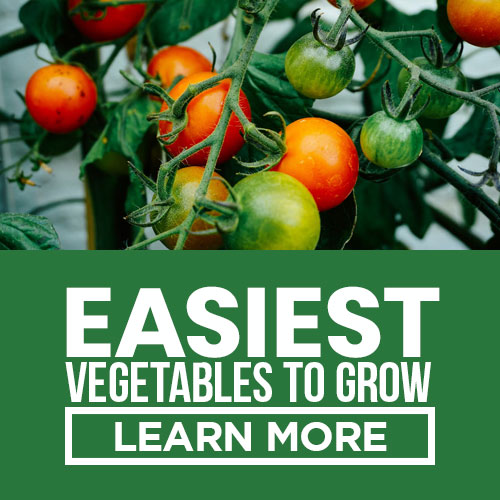companion plants for radishes


I approach gardening as a way to understand how different plants can work together. By practicing companion planting, I’ve seen my garden flourish in ways it never did before
Selecting the best Radishes companion plants is key to a productive garden. Knowing what to plant next to Radishes and what to plant between Radishes can protect your crops from pests and diseases. Consider plants that protect Radishes to maintain a healthy and thriving garden.
Companion planting is a method in gardening where certain plants are grown near each other to benefit mutually in terms of enhanced growth, better health, and reduced pest problems.
Imagine having a garden where plants help each other grow. I’m here to make that happen with companion planting. I’ll guide you through the process and show you which combinations have worked wonders for me.
I’ve found that planting radishes alongside lettuce helps to deter pests that can damage the lettuce leaves. I’ve also noticed that the radishes help to loosen the soil, making it easier for the lettuce roots to grow and access nutrients. In my experience, the radishes also act as a natural weed suppressor, keeping the area around the lettuce clear and allowing it to thrive.
 Over the years I have found that planting radishes with spinach has been supportive for both plants. The radishes help to repel pests that can damage the spinach, keeping my crop healthy. Additionally, the radishes help to loosen the soil, making it easier for the spinach to grow and thrive. Lastly, the radishes mature quickly, so I can harvest them before the spinach needs the extra space to grow.
Over the years I have found that planting radishes with spinach has been supportive for both plants. The radishes help to repel pests that can damage the spinach, keeping my crop healthy. Additionally, the radishes help to loosen the soil, making it easier for the spinach to grow and thrive. Lastly, the radishes mature quickly, so I can harvest them before the spinach needs the extra space to grow.
I first learned about using radishes as a companion plant for carrots from an old farmer. I have personally experienced that planting radishes alongside carrots helps to deter pests like carrot flies. Additionally, radishes help to break up the soil, making it easier for carrots to grow deep roots. Lastly, the radish leaves provide shade for the young carrot plants, protecting them from excessive sunlight.
Over time I figured out through trial and error that planting radishes alongside peas is a great idea. I noticed that radishes help deter pests that often attack peas, such as aphids and beetles. Additionally, radishes have shallow roots that help break up the soil, making it easier for peas to access nutrients and water. Lastly, the fast-growing nature of radishes provides some shade for the young pea plants, protecting them from excessive heat and sun.
This is a pretty common pairing! I’ve found that planting radishes near beans has been a great way to support the growth of both plants. Personally, I’ve noticed that radishes help deter pests that can harm the beans while also providing some shade to the beans’ delicate roots. Additionally, the radishes’ quick growth helps loosen the soil, making it easier for the beans to establish their roots.
This one comes from the book “Carrots love Tomatoes.” I’ve found that planting radishes alongside cucumbers has been a great companion planting strategy in my garden. The radishes help deter pests that commonly attack cucumbers, such as cucumber beetles. Additionally, the radishes’ quick growth helps to break up the soil, making it easier for the cucumber roots to penetrate and access nutrients.
This was a tip from a reader, but I have personally found that planting nasturtiums by my radishes has been incredibly beneficial. I have noticed that nasturtiums help deter pests that often attack radishes, such as aphids and flea beetles. Additionally, the vibrant flowers of nasturtiums attract pollinators, which in turn helps with the radish’s overall growth and yield. Lastly, nasturtiums act as a natural ground cover, preventing weeds from taking over and competing with the radishes for nutrients and sunlight.
 I’ve found that planting marigolds close to radishes has been good for my garden. The marigolds help deter pests that often attack radishes, such as aphids and nematodes. Additionally, the vibrant flowers of the marigolds attract beneficial insects like ladybugs, which further protect the radishes from harmful pests. Overall, I’ve noticed that my radishes thrive and have fewer issues when planted close to marigolds.
I’ve found that planting marigolds close to radishes has been good for my garden. The marigolds help deter pests that often attack radishes, such as aphids and nematodes. Additionally, the vibrant flowers of the marigolds attract beneficial insects like ladybugs, which further protect the radishes from harmful pests. Overall, I’ve noticed that my radishes thrive and have fewer issues when planted close to marigolds.
Another tip is to plant chives alongside radishes. I have found that chives help to deter pests that commonly attack radishes, such as aphids and flea beetles. Additionally, chives attract beneficial insects like ladybugs, which can help control any pest problems that arise. Lastly, chives have shallow roots that do not compete with radishes for nutrients, allowing both plants to thrive together.
I’ve found that planting radishes with beets has been a great companion for my beets. The radishes help deter pests that commonly attack beets, such as beetles and aphids. Additionally, the radishes act as a natural weed suppressant, keeping the soil around the beets clear and allowing them to thrive. Lastly, the radishes have a shallow root system that helps loosen the soil, making it easier for the beets to grow deep and develop healthy roots.
Just like there are plants that play well together, there are others that don’t get along. Here are some plants that you’re going to want to avoid putting in close proximity to each other. Most of these aren’t the end of the world if it happens, we only have so much garden space after all, but where it makes sense, keep these in mind.
NOTE: You’ll notice some of these plants might also be a companion plant listed above. With each pairing, there are benefits and drawbacks, so I’ve listed drawbacks here if any exist.
I learned this the hard way – planting radishes next to hyssop negatively impacted my hyssop plant. The radishes seemed to compete for nutrients and space, causing the hyssop to struggle and not thrive as well.
This one came from my neighbor, and the results may vary. They noticed that planting radishes near pole beans can negatively impact their growth. The radishes tend to compete for nutrients and space, stunting the growth of the pole beans.
This also came from Carrots Love Tomatoes. Radishes negatively impact Brassicas because they attract flea beetles, which can damage the leaves and stunt the growth of Brassicas.
Another one I’ve heard around is that mustard greens can negatively impact radishes by competing for nutrients in the soil, which can hinder the growth of radishes.
I’ve heard mixed things about this, but radishes can negatively impact turnips by competing for nutrients and space in the soil. They may also attract pests that can harm turnips.
In addition to the list below, there are some common plants you likely already have in your garden that I thought you might want to know. These veggies make up much of my garden, so here is what you need to know about companion planting them with Radishes.

Yes, radishes are a good companion plant for lettuce in a vegetable garden. They help deter pests like aphids and cucumber beetles, and their quick growth helps to loosen the soil for lettuce roots. Additionally, radishes can be harvested before they start to shade the lettuce, allowing more sunlight for the lettuce to grow.

Yes, radishes are a good companion plant for carrots in a vegetable garden. They help deter pests like carrot flies and improve the soil by breaking it up with their roots. Plus, radishes mature quickly, allowing you to harvest them before they start competing with the carrots for space and nutrients.

Yes, radishes are a good companion plant for beans in a vegetable garden. They help deter pests like aphids and beetles, and their shallow roots help loosen the soil for the beans. Additionally, radishes mature quickly and can be harvested before the beans need more space to grow.

Yes, radishes are a good companion plant for tomatoes. They help repel pests like aphids and can also help improve the soil for tomato plants. Plus, they mature quickly, so they won’t compete with the tomatoes for space.

Yes, radishes are a good companion plant for cucumbers in a vegetable garden. They help deter pests like cucumber beetles and provide shade for the cucumber plants. Additionally, radishes have a quick growth cycle, which means they can be harvested before they start competing with the cucumbers for space and nutrients.

Yes, radishes are a good companion plant for zucchini in a vegetable garden. They help deter pests like cucumber beetles and squash bugs, while also attracting beneficial insects like ladybugs. Additionally, radishes have a shallow root system that doesn’t compete with the deeper roots of zucchini, making them a compatible pair.

Yes, radishes are a good companion plant for peppers in a vegetable garden. They help deter pests like aphids and beetles, and their shallow roots don’t compete with the deeper roots of peppers for nutrients. Additionally, radishes can act as a natural mulch, helping to retain moisture in the soil for both plants.

Yes, radishes are a good companion plant for peas in a vegetable garden. They help repel pests that can damage pea plants and their shallow roots don’t compete with the deeper roots of the peas. Plus, they can help improve the soil for the peas by breaking it up with their root growth.

Yes, radishes are a good companion plant for summer squash. They help deter pests like squash bugs and beetles, and their shallow roots don’t compete for nutrients with the squash. Plus, radishes can be harvested quickly, making room for the squash to spread out.

Yes, radishes are a good companion plant for onions in a vegetable garden. They help deter pests like onion flies and can also help improve the soil by breaking it up with their roots. Additionally, radishes mature quickly, which means they can be harvested before they start to compete with the onions for space and nutrients.
Your Turn!
‘)
commentBox.css({ ‘max-height’: commentHeight, ‘height’:’1500px’, ‘display’:’none’, ‘position’:’relative’, ‘overflow’:’hidden’ });
}
if(commentHeight < ‘1500’) {
commentBox.css({‘display’:’none’})
}
commentBox.before(‘
‘);
jQuery(‘.smallBtn’).click(function(){
jQuery(‘.smallBtn’).toggleClass(‘active’);
commentBox.slideToggle(‘fast’);
});
jQuery(‘.loadAllBtn’).click(function() {
commentBox.animate({ height: commentHeight }, 500);
setTimeout(function(){ buttonCheck(); }, 750);
});
jQuery(‘.loadMoreBtn’).click(function () {
if(commentBox.height() < commentHeight) {
commentBox.animate({height: ‘+=1500’ }, 500);
}
setTimeout(function(){ buttonCheck(); }, 750);
});
jQuery(‘.collapseBtn’).click(function(){
commentBox.animate({ height: ‘1500px’ }, 500);
jQuery(this).hide();
jQuery(‘.loadMoreBtn’).show();
jQuery(‘.loadAllBtn’).show();
});
function buttonCheck() {
if(commentBox.height() >= commentHeight) {
jQuery(‘.collapseBtn’).show();
jQuery(‘.loadMoreBtn’).hide();
jQuery(‘.loadAllBtn’).hide();
}
};
});
